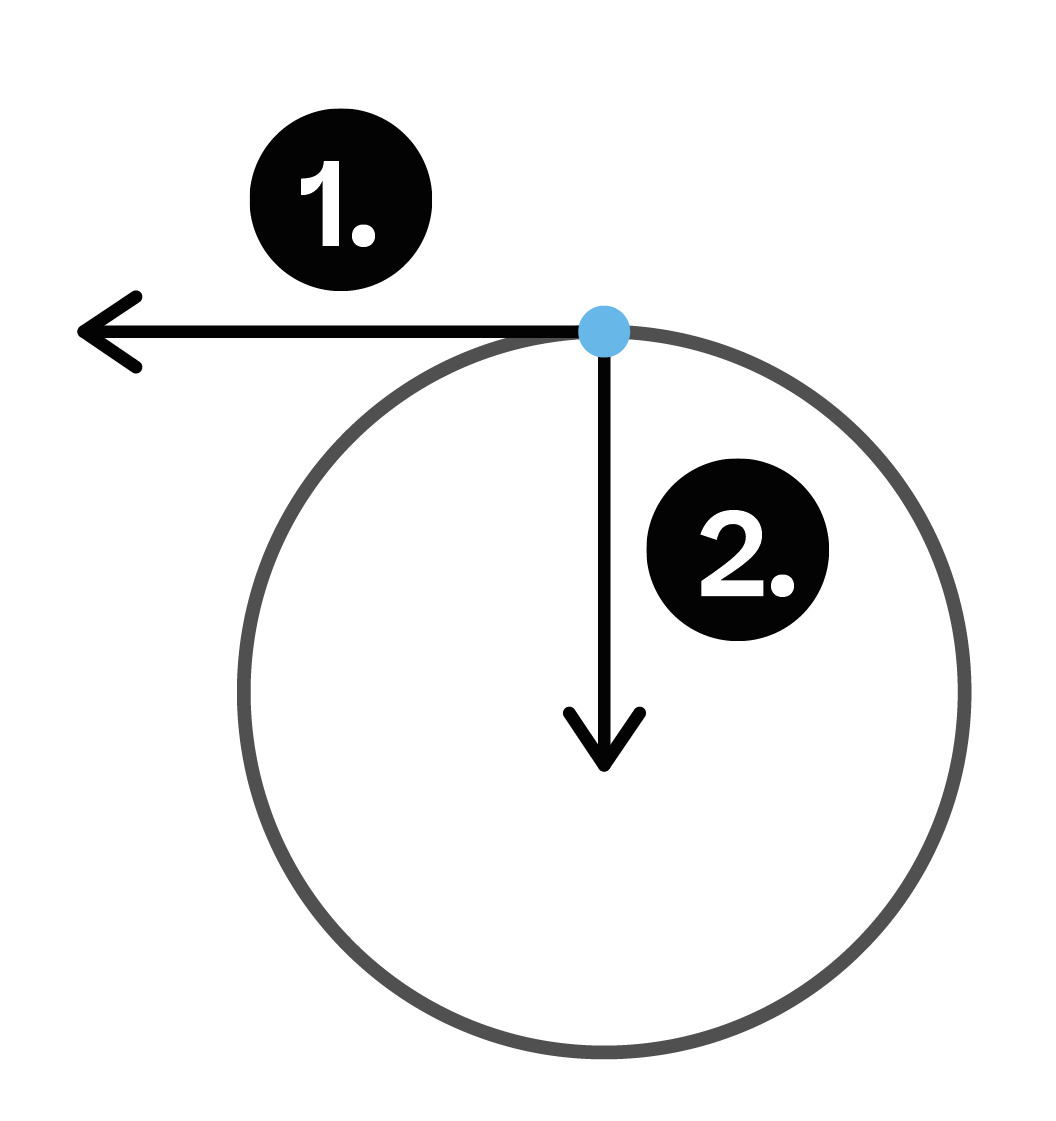Circular motion and satellites
In a nutshell
Circular motion is when an object moves in an orbit or along a circular path. As the object moves along its path, the direction in which it is travelling keeps changing so that it stays in a circular path.
Changing velocity
The velocity of an object can change without the speed of the object changing. This is because velocity is a vector quantity and it can change when either its magnitude or direction are changed. Although the speed is not changing, the object is still accelerating because the direction of the velocity vector is changing.
Newton's second law shows that in order for an object to accelerate, it must have a resultant force acting on it. This resultant force will be acting in the direction that the object is accelerating in.
In circular motion, this resultant force is referred to as the centripetal force and it points towards the centre of the circle. This is because the acceleration must point towards the centre to keep the object moving in a circular orbit.
| | | 1.
| Velocity | | 2.
| Centripetal force
|
|
Example
The planets are orbiting the sun due to their gravitational attraction to the sun. In this case, the centripetal force is the gravitational force acting between the sun and the planets.
Satellites
A satellite is an object that orbits a more massive object, like a planet or a star. A natural satellite is one that is not man-made, every moon that orbits a planet is a natural satellite.
There are also artificial satellites, these man-made satellites are placed in an orbit either around the Earth or another planet. Artificial satellites can collect useful information about the planet they orbit, including information about the weather and the atmosphere.
Satellites that monitor the weather often have a polar orbit. Each polar orbit involves orbiting over the Earth's poles.
Here on Earth, there are many artificial satellites that are used for communication purposes as well. Communication satellites are essential for phones and televisions to work. These satellites usually have a geostationary orbit.
A geostationary satellite is one that orbits the Earth every 24 hours. This means that the satellite moves with the Earth and appears to be stationary in the sky.



